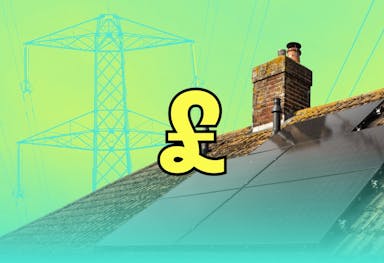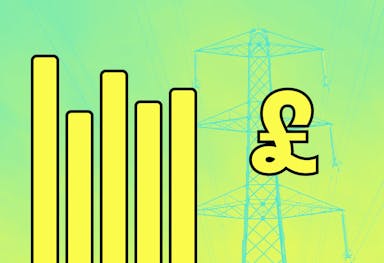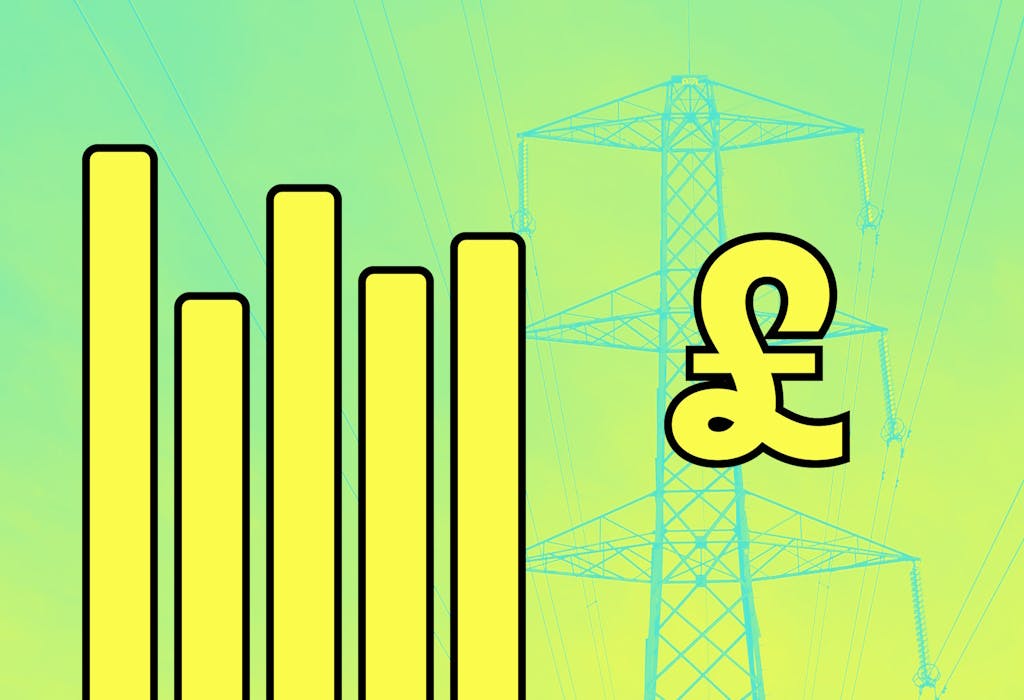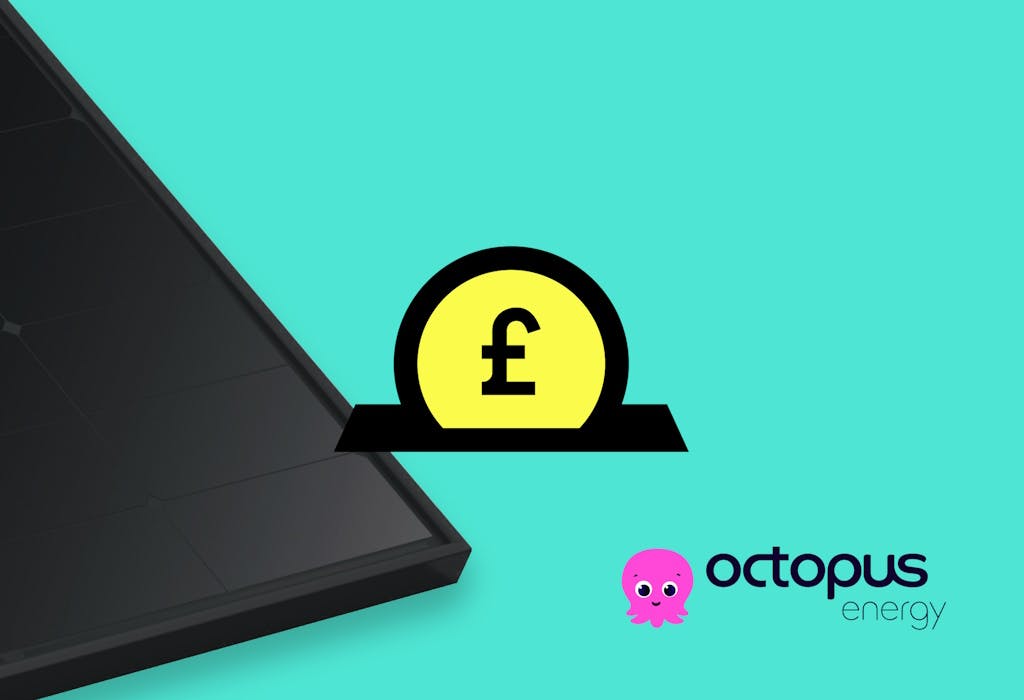- Solar advice hub
- Exporting-to-the-grid
- The Feed-in Tariff (FiT) scheme: an expert guide
The Feed-in Tariff (FiT) scheme: an expert guide
Discover the history of the UK's solar Feed-in Tariff between 2010 and 2019 – and learn about its replacement.


Why you can trust our content
We know that the solar industry is full of misinformation, but we only use reliable sources, including:
- Our experienced solar experts, installers and system designers
- Our own database of solar & battery system designs
- Authoritative bodies like MCS and the UK government



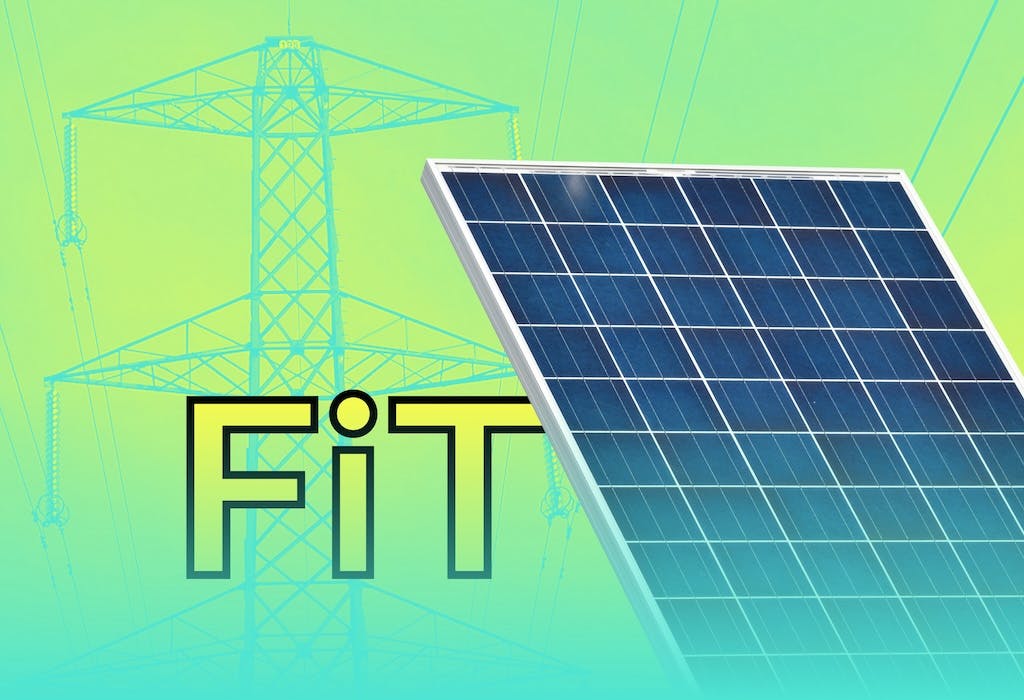
Calculate savings
What kind of home do you live in?
Calculate savings
What kind of home do you live in?
The Feed-in Tariff: at a glance
The Feed-in Tariff (FiT) provided a financial incentive for UK households and businesses to produce their own renewable electricity, and succeeded in massively increasing solar adoption rates across the nation.
After it stopped taking on additional customers, a new scheme took its place as the primary way of compensating solar homes: the Smart Export Guarantee (SEG). This initiative has created a profitable, flexible, and competitive market for solar panel owners.
In this article, we’ll look at the FiT’s impact on households, how it affects people who are still signed up to it, and how you can benefit from the SEG.
If you’re wondering how much a solar & battery system could save you, answer a few quick questions below and we’ll provide you with an estimate.
Find out how much you can save
What kind of home do you live in?
What was the Feed-in Tariff?
The Feed-in Tariff was a government initiative introduced in April 2010, which compelled energy suppliers to pay households and businesses for generating and exporting renewable electricity.
The scheme sparked incredible growth in the number of solar homes, particularly in its first five years.
While it was mainly used by households with solar panels, the FiT covered a range of renewable energy technologies, including wind, hydro, anaerobic digestion, and micro combined heat and power (micro-CHP).
The FiT scheme offered two types of payments:
- Generation Tariff: This payment was for all the electricity produced by a renewable system, regardless of whether the generator used or exported it. The generation tariff was originally set at around 40-50p per kilowatt-hour (kWh).
- Export Tariff: Besides the generation payment, participants could also receive an export tariff for any electricity that they sent to the grid. The export tariff was originally set at around 3p per kWh.
FiT payments were guaranteed for 10 to 25 years, depending on the technology, when the system was installed, and whether it was part of the Renewables Obligation (RO) scheme.
This was a separate government initiative that ran from 2002 to 2017, and also encouraged uptake of renewable energy sources across Britain.
Solar homes that signed up to the FiT before 1 August 2012 received a 25-year contract, while anyone who joined with solar after that point got a 20-year contract.
All FiT payments were funded by a levy on everyone's energy bills.
Why was the Feed-in Tariff set up?
The government set up the FiT to assist in its transition to a low-carbon, decentralised electricity network that puts less pressure on the grid.
This was intended to help the UK as it electrifies its transport and heating systems to cut costs and hit its net-zero targets.
To meet this overriding goal, the government created five main objectives for the FiT :
- Encourage deployment of small-scale low-carbon electricity generation
- Empower people and give them a direct stake in the transition to a low-carbon economy
- Assist the public take-up of carbon reduction measures
- Foster behavioural change in energy use
- Help develop local supply chains and drive down energy costs
The scheme followed in the footsteps of similar government programmes in Germany and the US that date back to the 1990s and 2000s, and managed to increase solar adoption in their countries to varying degrees.
Who qualified for the Feed-in Tariff?
Homeowners, business owners, and organisations were eligible for the FiT, provided they installed one of the qualifying renewable energy technologies.
The scheme was open to both existing and new energy producers.
To qualify, you also needed a generation and/or export meter, and your system had to be installed by a company that was certified by the Microgeneration Certification Scheme (MCS).
Solar panel systems could be any size up to five megawatts (MW), which is hundreds of times larger than a standard domestic system.
You could also have a wind, hydro, or anaerobic digestion system, as long as your total installed capacity (TIC) didn't reach 5MW.
Micro-CHP owners, on the other hand, were only permitted a TIC of 2kW.
How much could you earn with the Feed-in Tariff?
A household with a 4 kilowatt-peak (kWp) solar panel system that signed up to the FiT in 2011 may receive more than £41,000 over the course of its 25-year contract.
This is based on the system generating 3,400kWh of electricity per year and exporting 50% of it, and receiving 2011 rates – meaning the home is paid 46.81p for every kWh generated, and 3.3p per kWh exported to the grid.
Considering Ofgem raises generation rates every year to keep them in line with the Retail Price Index, the actual total this household ends up with will likely be much higher.
This allowed people to quickly recoup the high upfront cost of solar panels.
However, payment levels didn't stay high for long. There was a steep drop in rates by the middle of the 2010s, which was partly planned, and partly down to the increased popularity of solar installations.
By 2019, the upper rate for new solar installations of 10kWp or less was just 4.01p – a more than a 90% decrease in eight years.
Verified expertThe Feed-in Tariff was a funding method designed to ‘kick-start’ solar in the UK. Once it did that, the price of solar PV systems started to come down, because it became a bigger market. There’s no need to use taxpayers' or bill payers’ money to support solar anymore because it’s a great purchase without it.
Natalie Hamilton
Operations Manager at Certi-fi Schemes Limited
Natalie has been working with Certi-fi Schemes since 2018, providing an end-to-end certification process for the home energy sector.
Why did the Feed-in Tariff rates vary?
FiT rates varied based on the type of technology you had installed, your total installed capacity, and whether you'd signed up before the deployment cap was reached.
Deployment caps, which were introduced in February 2016, set a limit on the capacity of installations that could receive the highest tariff rates in each three-month period.
For example, in the first quarter of 2018, Ofgem set a 293,224kWp limit on solar installations under 10kWp . If a cap was hit or exceeded, the next quarter's tariff was cut by 10%, in addition to the planned decline.
FiT rates for solar panel systems also varied depending on whether you were a multi-site generator, which meant you owned or benefited from at least 25 eligible solar installations.
And after 1 April 2012, solar households had to meet the Energy Efficiency Requirement to qualify for a higher tariff rate, meaning you needed to have an Energy Performance Certificate (EPC) rating of D or above when the installation finished.
What are the Feed-in Tariff rates in 2025?
Each year, Ofgem increases its Feed-in Tariff rates in line with inflation, and publishes them on its website.
We've used the rates published in April 2025 to demonstrate how Feed-in Tariff rates fell over the years (focusing on systems with a capacity of 4kW, connected to buildings that were occupied prior to installation, and meeting the 'higher' Energy Efficiency Requirement rating).
For example, a household that had a solar panel system installed between April 2010 and April 2011 will receive 74.37p for each kWh generated between April 2025 and March 2026.
In contrast, a home that had a system installed between April 2018 and March 2019 will receive just 5.65p for each kWh generated between April 2025 and March 2026.
You'll also spot that, for homes signing up in April 2016 and afterwards, their generation rate between April 2025 and March 2026 is lower than their export rate.
Current Feed-in Tariff rates, April 2025
Can you still access the Feed-in Tariff?
The FiT scheme stopped accepting applications on 31 March 2019, meaning new installations are unable to join the scheme.
However, anyone who signed up before the deadline will still receive FiT payments until the end of their contract.
The FiT's replacement, the Smart Export Guarantee, is available to all renewable generators, and offers better export tariffs than the FiT. More on that below.

The UK's first solar subscription
- No upfront cost
- Fixed monthly fee
- 20-year Sunsave Guarantee
Do old applicants still receive Feed-in Tariff payments?
If you signed up before applications closed in March 2019, you'll continue to receive FiT payments for the duration of your contract.
FiT recipients will continue receiving payments until 2039, when the last 20-year contracts (handed out in 2019) end.
You can also switch from your FiT export rate to a Smart Export Guarantee export tariff, potentially earning hundreds of pounds more per year without giving up your FiT generation tariff. More on that below.
Every year since the FiT began, Ofgem has increased existing recipients' export and generation rates in line with the Retail Price Index, and will continue doing do.
For example, a household that signed up to FiT in April 2015 initially received a generation rate of 13.39p per kWh. By 2023, this tariff had increased to 18.72p per kWh.
2024 saw this rate rise to 19.7p per kWh, and in 2025, it hit 20.38p per kWh.
A household with a 4kWp system that generates 3,400kWh per year will earn £238 more per year in 2025, than when the solar panels were first installed in 2015 - which reflects how much inflation has risen in that time.
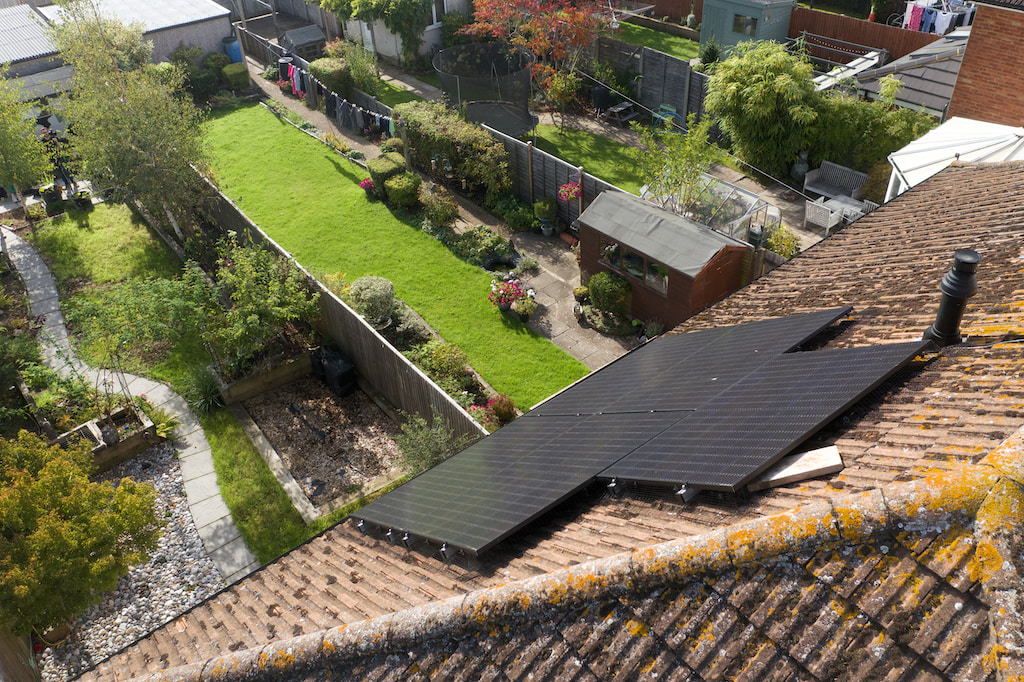
Why did the Feed-in Tariff end?
The FiT ended because it had ultimately served its purpose: to trigger growth in domestic renewable energy installations in the UK.
The global cost of solar energy has also fallen a long way since the beginning of the FiT in 2010.
Its price was $2.15 per watt in 2010, but by 2019 had tumbled 81% to $0.40 per watt. Solar became significantly more affordable, which reduced the need for the government to provide a financial incentive.
Was the Feed-in Tariff a success?
The FiT was a massive success in multiple ways.
It cut electricity bills, empowered people all over the country, reduced the country’s carbon emissions, and increased the grid’s capacity and flexibility.
Most importantly, it popularised going solar, to the extent that the number of solar households in the UK skyrocketed from around 24,000 at the start of 2011 to more than 838,000 by the end of 2015.
This five-year period is still responsible for 56% of the country’s domestic solar installations, according to government data.
This era ended in January 2016, when the government cut FiT generation tariffs dramatically. The rate for the average 4kWp retrofit plummeted overnight, from 17.49p per kWh to 6.38p per kWh.
It was a turning point. Generation rates never recovered, and it had a direct effect on the number of solar installations.
The next five years, from the start of 2016 to the end of 2020, saw fewer domestic systems installed – combined – than in 2015 alone.
Solar sales have soared back to their peak levels since 2021, due to both the creation of the Smart Export Guarantee – more about that below – and the spiralling electricity prices produced by the global energy crisis.
Residential UK solar panel installations by year
Is there a replacement for the Feed-in Tariff?
The Smart Export Guarantee was introduced as a replacement for the FiT on 1 January 2020.
The SEG compels energy suppliers with at least 150,000 customers to pay households for the renewable electricity they export to the grid, though it doesn’t include a generation rate.
Initially, energy suppliers offered low rates simply to fulfil their obligation, but a growing realisation that higher tariffs can attract new customers has since made the market extremely competitive.
There are now many time of use tariffs – including Intelligent Octopus Flux and British Gas Electric Driver – that allow you to profit by importing electricity to your battery at off-peak times, then using or selling it during peak periods.
From the start of April 2023 to the end of March 2024, a massive 283,666 installations signed up to an SEG tariff – three times more than the previous year’s 92,946 total – according to Ofgem’s Annual Report.
It was also considerably more than the 153,010 new domestic installations in this period, because it also includes households with older systems that joined an SEG tariff during this time.
Overall, households on SEG tariffs earned £30.7 million – a 327% increase on the £7.2 million received in the previous year.
How do SEG rates compare to FiT rates?
SEG tariffs only pay you for exported electricity, unlike the FiT, which also paid you simply for generating electricity.
Households are no longer paid for every kWh of electricity they generate, but the earnings you can make from exporting your electricity are substantially better.
As of November 2024, any solar household that signed up to the FiT after August 2012 will receive 7.14p per kWh until the end of March 2025.
Compare that with the best SEG rates, which include more than a dozen better tariffs. If you’re happy to change your import supplier, you can currently earn three times as much as you can on the FiT export rate – or more.
Can you claim FiT payments and SEG payments?
If you’re signed up to the FiT, you can keep receiving generation payments until the end of your contract, but you’ll have to choose between getting FiT or SEG export payments.
With many SEG tariffs paying a significantly higher rate than the current FiT export rate, this may seem like an easy decision.
However, many households on the FiT don’t have an export meter. These homes receive ‘deemed’ export payments, which means the government estimates what percentage of their solar electricity they’ll export each year. Currently, this is set at 50%.
81% of the money paid out by the scheme for exports is deemed, according to Ofgem’s annual report.
If you’re among this number and export less than 50% of your solar electricity, you may be better off staying on the FiT – so make sure you work it out before switching.
For example, a household exporting 1,200kWh per year would be getting £85.68 from the Feed-in Tariff export rate, but £180 from a standard 15p SEG tariff.
Will the UK ever bring back the Feed-in Tariff?
The chances of the UK bringing back the FiT are slim. As solar technology continues to improve and become more affordable, the need for financial incentives is becoming ever slimmer, and the export tariffs offered by energy providers are also becoming increasingly competitive.
However, there are still some government grants available for certain people looking to get solar panels, such as the Energy Company Obligation (ECO4) scheme.
Next steps
The FiT prompted a revolution in the first half of the 2010s.
It created the necessary conditions for more than 800,000 UK households to go solar, transforming an industry that had previously made very little progress.
The UK went from a solar capacity of 14.6MW before the scheme to 10,000MW at the end of 2015. Progress slowed down enormously when the government cut FiT rates – but the SEG has kick-started uptake once again.
If you’re interested in how much you could save with a solar & battery system, just answer a few quick questions below, and we’ll provide an estimate.
Find out how much you can save
What kind of home do you live in?
Feed-in Tariff: FAQs
Related articles

Written byMelody Abeni
Based in London, Melody is a specialist green technology writer who has been covering sustainability, climate action and ESG for the past five years, after gathering operational experience in green investing and financial services. She has written for various industry publications, including renewable technology advisor The Eco Experts, and she holds a Master’s degree in law from Birkbeck University.





